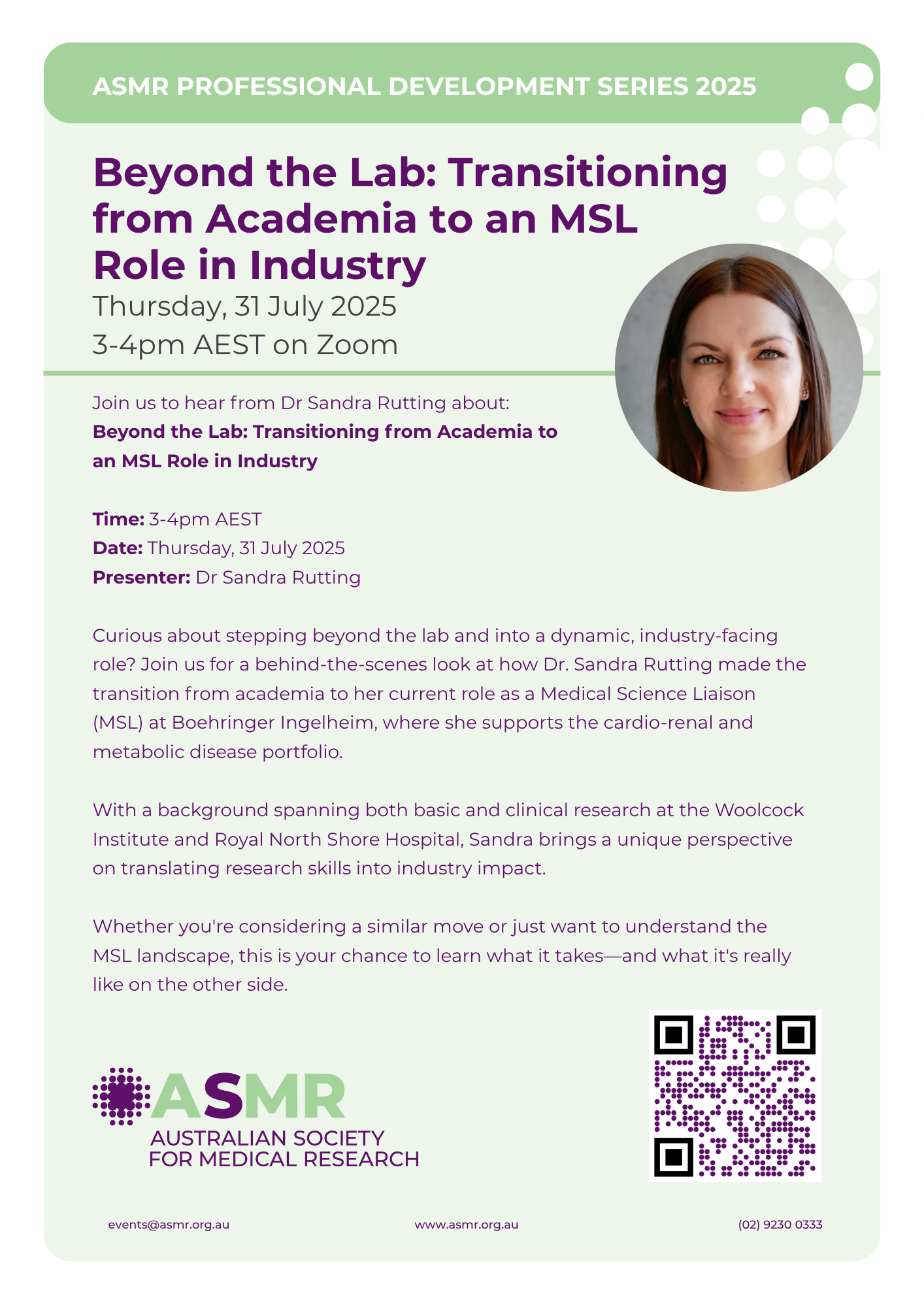CPD Events
ASMR’s professional development webinar series for 2025 continues!
Join us to hear from Dr Sandra Rutting about:
Beyond the Lab: Transitioning from Academia to an MSL Role in Industry
Time: 3-4pm AEST
Date: Thursday, 31 July 2025
Presenter: Dr Sandra Rutting
Curious about stepping beyond the lab and into a dynamic, industry-facing role? Join us for a behind-the-scenes look at how Dr Sandra Rutting made the transition from academia to her current role as a Medical Science Liaison (MSL) at Boehringer Ingelheim, where she supports the cardio-renal and metabolic disease portfolio.
With a background spanning both basic and clinical research at the Woolcock Institute and Royal North Shore Hospital, Sandra brings a unique perspective on translating research skills into industry impact.
Whether you’re considering a similar move or just want to understand the MSL landscape, this is your chance to learn what it takes—and what it’s really like on the other side.
Register here today!
Future PD Webinar Dates:
11 September 2025: TBA

